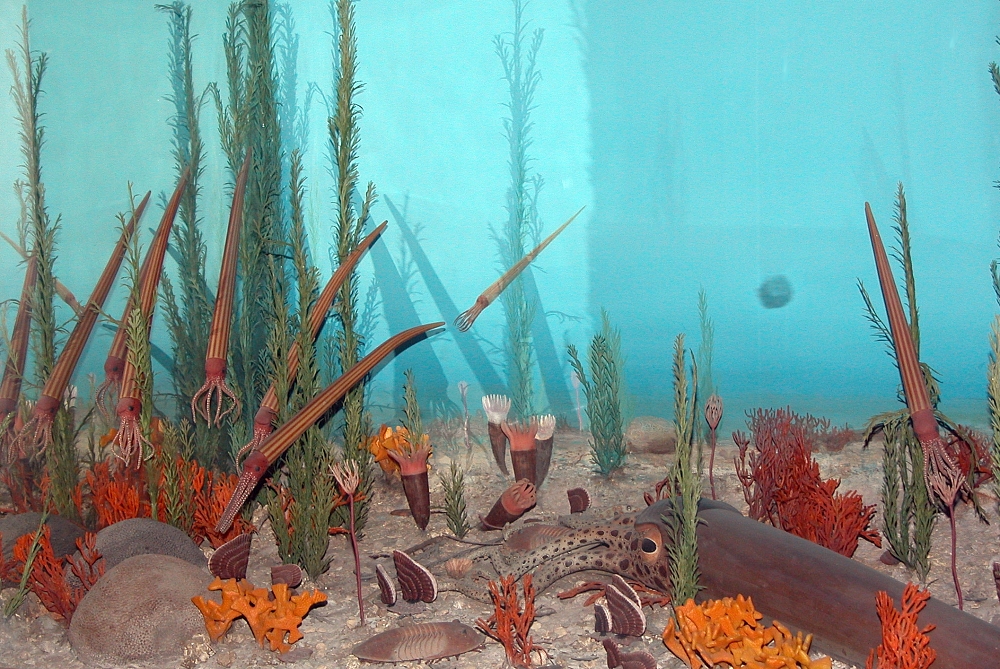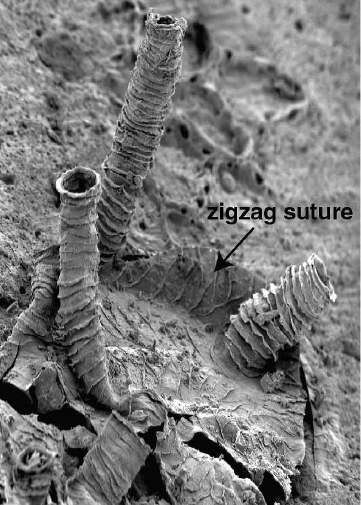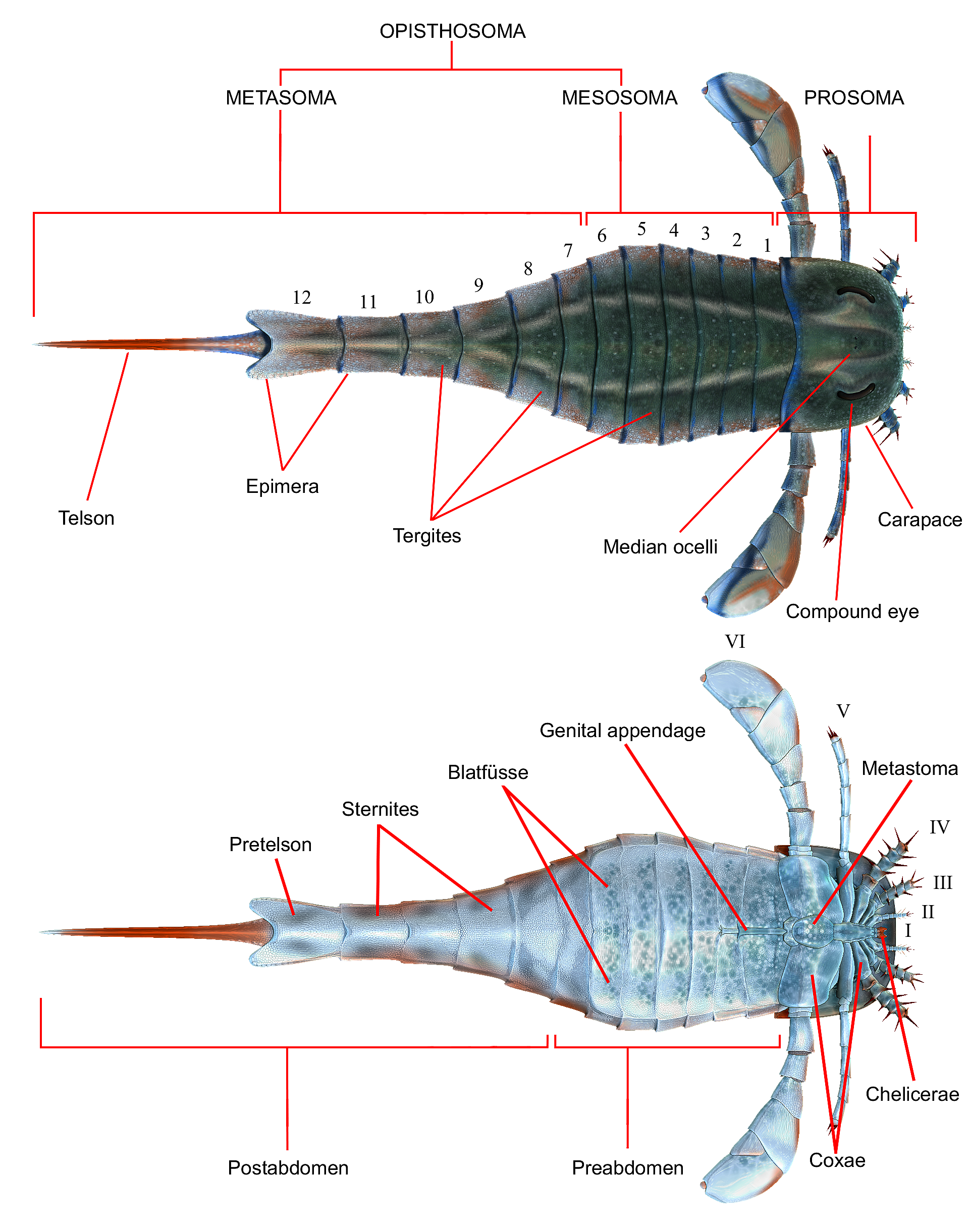|
Archopterus
''Archopterus'' is a genus of eurypterid in the family Adelophthalmidae, represented by one species. It was discovered in the Wenchang Formation of Tianfucun, Anji County, Zhejiang Province, South China. This genus is represented by a single species (''Archopterus anjiensis'') from the Ordovician, the oldest species from China and also of its family. Description ''Archopterus'' was a predator that may have fed on small mollusks, crustaceans and worms. Fossil importance The only known fossil, found alongside various Hexactinellid sponges, graptolites, and nautiloids in deep-water shale, known as the Anji Biota, now extends the range of the family of Adelophthalmidae from the early Silurian to late Ordovician. This also now supports the theory of the evolution of eurypterids in Gondwana Gondwana ( ; ) was a large landmass, sometimes referred to as a supercontinent. The remnants of Gondwana make up around two-thirds of today's continental area, including South America, ... [...More Info...] [...Related Items...] OR: [Wikipedia] [Google] [Baidu] |
Adelophthalmidae
Adelophthalmidae (the name deriving from the type genus ''Adelophthalmus'', meaning "no obvious eyes") is a family of eurypterids, an extinct group of aquatic arthropods. Adelophthalmidae is the only family classified as part of the superfamily Adelophthalmoidea, which in turn is classified within the infraorder Diploperculata in the suborder Eurypterina. Adelophthalmid eurypterids were small and swimming eurypterids that appeared in the Silurian period. With the earliest known members of the group, '' Nanahughmilleria prominens'' and '' Parahughmilleria maria'', being known from deposits of Early Silurian (possibly the Llandovery epoch) age and the last members, belonging to the long-lasting and widespread genus ''Adelophthalmus'', going extinct in the Early Permian, the Adelophthalmidae is the longest lasting single family of eurypterids. The survival of the group, and of swimming eurypterids (the suborder Eurypterina) beyond the Late Devonian is entirely due to the survival, a ... [...More Info...] [...Related Items...] OR: [Wikipedia] [Google] [Baidu] |
Adelophthalmoidea
Adelophthalmidae (the name deriving from the type genus ''Adelophthalmus'', meaning "no obvious Compound eyes, eyes") is a Family (biology), family of eurypterids, an extinct group of aquatic arthropods. Adelophthalmidae is the only family classified as part of the superfamily Adelophthalmoidea, which in turn is classified within the infraorder Diploperculata in the suborder Eurypterina. Adelophthalmid eurypterids were small and Nekton, swimming eurypterids that appeared in the Silurian Geological period, period. With the earliest known members of the group, ''Nanahughmilleria, Nanahughmilleria prominens'' and ''Parahughmilleria, Parahughmilleria maria'', being known from deposits of Early Silurian (possibly the Llandovery epoch, Llandovery Epoch (geology), epoch) age and the last members, belonging to the long-lasting and widespread genus ''Adelophthalmus'', going extinct in the Cisuralian, Early Permian, the Adelophthalmidae is the longest lasting single family of eurypterids. ... [...More Info...] [...Related Items...] OR: [Wikipedia] [Google] [Baidu] |
Ordovician Eurypterids
The Ordovician ( ) is a geologic period and system, the second of six periods of the Paleozoic Era, and the second of twelve periods of the Phanerozoic Eon. The Ordovician spans 41.6 million years from the end of the Cambrian Period Ma (million years ago) to the start of the Silurian Period Ma. The Ordovician, named after the Welsh tribe of the Ordovices, was defined by Charles Lapworth in 1879 to resolve a dispute between followers of Adam Sedgwick and Roderick Murchison, who were placing the same rock beds in North Wales in the Cambrian and Silurian systems, respectively. Lapworth recognized that the fossil fauna in the disputed strata were different from those of either the Cambrian or the Silurian systems, and placed them in a system of their own. The Ordovician received international approval in 1960 (forty years after Lapworth's death), when it was adopted as an official period of the Paleozoic Era by the International Geological Congress. Life continued to flourish dur ... [...More Info...] [...Related Items...] OR: [Wikipedia] [Google] [Baidu] |
Ordovician
The Ordovician ( ) is a geologic period and System (geology), system, the second of six periods of the Paleozoic Era (geology), Era, and the second of twelve periods of the Phanerozoic Eon (geology), Eon. The Ordovician spans 41.6 million years from the end of the Cambrian Period Megaannum, Ma (million years ago) to the start of the Silurian Period Ma. The Ordovician, named after the Celtic Britons, Welsh tribe of the Ordovices, was defined by Charles Lapworth in 1879 to resolve a dispute between followers of Adam Sedgwick and Roderick Murchison, who were placing the same Rock (geology), rock beds in North Wales in the Cambrian and Silurian systems, respectively. Lapworth recognized that the fossil fauna in the disputed Stratum, strata were different from those of either the Cambrian or the Silurian systems, and placed them in a system of their own. The Ordovician received international approval in 1960 (forty years after Lapworth's death), when it was adopted as an official per ... [...More Info...] [...Related Items...] OR: [Wikipedia] [Google] [Baidu] |
Late Ordovician
The Late Ordovician is the third and final epoch of the Ordovician period, lasting million years and spanning from around 458.2 to 443.1 million years ago. The rocks associated with this epoch are referred to as the Upper Ordovician Series. At this time, Western and Central Europe and North America collided to form Laurentia, while glaciers built up in Gondwana, which was positioned over the South Pole. This caused a drop in global temperatures, resulting in "ice house" conditions. For most of this time, life continued to flourish, but at and near the end of the period, there were mass-extinction events that seriously affected planktonic forms like conodonts, graptolites, and some groups of trilobites ( Agnostida and Pytchopariida, which completely died out, and the Asaphida which were much reduced). Brachiopods, bryozoans and echinoderms were also heavily affected, and the endocerid cephalopods died out completely, except for possible rare Silurian The Silurian ( ... [...More Info...] [...Related Items...] OR: [Wikipedia] [Google] [Baidu] |
Nautiloid
Nautiloids are a group of cephalopods (Mollusca) which originated in the Late Cambrian and are represented today by the living ''Nautilus'' and ''Allonautilus''. Fossil nautiloids are diverse and species rich, with over 2,500 recorded species. They flourished during the early Paleozoic era, when they constituted the main predatory animals. Early in their evolution, nautiloids developed an extraordinary diversity of shell shapes, including coiled morphologies and giant straight-shelled forms ( orthocones). No orthoconic and only a handful of coiled species, the nautiluses, survive to the present day. In a broad sense, "nautiloid" refers to a major cephalopod subclass or collection of subclasses (Nautiloidea ''sensu lato''). Nautiloids are typically considered one of three main groups of cephalopods, along with the extinct ammonoids (ammonites) and living coleoids (such as squid, octopus, and kin). While ammonoids and coleoids are monophyletic clades with exclusive ancestor-desce ... [...More Info...] [...Related Items...] OR: [Wikipedia] [Google] [Baidu] |
Gondwana
Gondwana ( ; ) was a large landmass, sometimes referred to as a supercontinent. The remnants of Gondwana make up around two-thirds of today's continental area, including South America, Africa, Antarctica, Australia (continent), Australia, Zealandia, Arabian Peninsula, Arabia, and the Indian subcontinent. Gondwana was formed by the Accretion (geology), accretion of several cratons (large stable blocks of the Earth's crust), beginning with the East African Orogeny, the collision of India and Geography of Madagascar, Madagascar with East Africa, and culminating in with the overlapping Brasiliano orogeny, Brasiliano and Kuunga orogeny, Kuunga orogenies, the collision of South America with Africa, and the addition of Australia and Antarctica, respectively. Eventually, Gondwana became the largest piece of continental crust of the Paleozoic Era, covering an area of some , about one-fifth of the Earth's surface. It fused with Laurasia during the Carboniferous to form Pan ... [...More Info...] [...Related Items...] OR: [Wikipedia] [Google] [Baidu] |
Silurian
The Silurian ( ) is a geologic period and system spanning 23.5 million years from the end of the Ordovician Period, at million years ago ( Mya), to the beginning of the Devonian Period, Mya. The Silurian is the third and shortest period of the Paleozoic Era, and the third of twelve periods of the Phanerozoic Eon. As with other geologic periods, the rock beds that define the period's start and end are well identified, but the exact dates are uncertain by a few million years. The base of the Silurian is set at a series of major Ordovician–Silurian extinction events when up to 60% of marine genera were wiped out. One important event in this period was the initial establishment of terrestrial life in what is known as the Silurian-Devonian Terrestrial Revolution: vascular plants emerged from more primitive land plants, dikaryan fungi started expanding and diversifying along with glomeromycotan fungi, and three groups of arthropods ( myriapods, arachnids and hexapods) ... [...More Info...] [...Related Items...] OR: [Wikipedia] [Google] [Baidu] |
Anji Biota
Anji may refer to: Places *Hu Prefecture, known as Anji Prefecture between 1225 and 1276 *Anji County, in Huzhou, Zhejiang, China *Anji Bridge, or Zhaozhou Bridge, an ancient stone bridge in Hebei, China *Anji, a village in Balasore (Orissa), India Arts and media Works * "Anji" (instrumental), a solo acoustic guitar piece composed and recorded by Davey Graham * ''Anji'' (film), 2004 Indian Telugu-language film Fictional people *Anji Kapoor, a character in the Eighth Doctor Adventures *Anji Mito, a character in the ''Guilty Gear'' series of fighting games *Yūkyūzan Anji, a minor character in Rurouni Kenshin People * Anji Hunter (born 1955), political ally of Tony Blair * Anji Kaneko (1920–2010), Japanese Imperial Army soldier * Kallam Anji Reddy (Anji Reddy, born 1940), founder of Dr. Reddy's Laboratories, an Indian pharmaceutical company * Anji Xtravaganza ( 1960–1993), performer Other uses *Anji (Ryūkyū), a historical title and rank in the Ryukyu Islands *FC Anji Maha ... [...More Info...] [...Related Items...] OR: [Wikipedia] [Google] [Baidu] |
Sponge
Sponges or sea sponges are primarily marine invertebrates of the animal phylum Porifera (; meaning 'pore bearer'), a basal clade and a sister taxon of the diploblasts. They are sessile filter feeders that are bound to the seabed, and are one of the most ancient members of macrobenthos, with many historical species being important reef-building organisms. Sponges are multicellular organisms consisting of jelly-like mesohyl sandwiched between two thin layers of cells, and usually have tube-like bodies full of pores and channels that allow water to circulate through them. They have unspecialized cells that can transform into other types and that often migrate between the main cell layers and the mesohyl in the process. They do not have complex nervous, digestive or circulatory systems. Instead, most rely on maintaining a constant water flow through their bodies to obtain food and oxygen and to remove wastes, usually via flagella movements of the so-called " collar ... [...More Info...] [...Related Items...] OR: [Wikipedia] [Google] [Baidu] |
Graptolite
Graptolites are a group of colonial animals, members of the subclass Graptolithina within the class Pterobranchia. These filter-feeding organisms are known chiefly from fossils found from the Middle Cambrian ( Miaolingian, Wuliuan) through the Lower Carboniferous ( Mississippian). A possible early graptolite, ''Chaunograptus'', is known from the Middle Cambrian. Recent analyses have favored the idea that the living pterobranch '' Rhabdopleura'' represents an extant graptolite which diverged from the rest of the group in the Cambrian. Fossil graptolites and ''Rhabdopleura'' share a colony structure of interconnected zooids housed in organic tubes (theca) which have a basic structure of stacked half-rings (fuselli). Most extinct graptolites belong to two major orders: the bush-like sessile Dendroidea and the planktonic, free-floating Graptoloidea. These orders most likely evolved from encrusting pterobranchs similar to ''Rhabdopleura''. Due to their widespread abundance, pl ... [...More Info...] [...Related Items...] OR: [Wikipedia] [Google] [Baidu] |
Eurypterid
Eurypterids, often informally called sea scorpions, are a group of extinct marine arthropods that form the Order (biology), order Eurypterida. The earliest known eurypterids date to the Darriwilian stage of the Ordovician period, 467.3 Myr, million years ago. The group is likely to have appeared first either during the Early Ordovician or Late Cambrian period. With approximately 250 species, the Eurypterida is the most diverse Paleozoic Chelicerata, chelicerate order. Following their appearance during the Ordovician, eurypterids became major components of marine faunas during the Silurian, from which the majority of eurypterid species have been described. The Silurian genus ''Eurypterus'' accounts for more than 90% of all known eurypterid specimens. Though the group continued to diversify during the subsequent Devonian period, the eurypterids were heavily affected by the Late Devonian extinction event. They declined in numbers and diversity until becoming extinct during the Permi ... [...More Info...] [...Related Items...] OR: [Wikipedia] [Google] [Baidu] |







